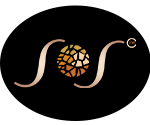Laser Toning For Skin Lightening & Skin Rejuvenation
A variety of skin issues can be treated using laser toning, a modern, safe, and efficient cosmetic procedure. The skin’s tone, texture, and colour are improved after this popular process for treating hyperpigmentation, melasma, acne scars, dark spots, and sunspots. A non-surgical procedure to treat pigmentation problems is laser toning.

What is Laser Toning and How Does It Work?
A common way for treating refractory melasma is laser toning or the low-fluence, multi-pass technique. The phrase “laser toning” derives from the improvements in skin tone that follow laser treatment.
In contrast to the single-pass, high fluence therapy of selective photothermolysis, laser toning uses a low-fluence, multi-pass approach. By heating melanosomes slowly and destroying them with several passes, cell death is prevented while maintaining the integrity of the cell’s membrane and nucleus.
The idea behind laser toning is to heat the target portion without really harming it. Controlling this heat harm increases skin moisture and naturally boosts melanin metabolism. It refines your skin, minimises pores, minimises small wrinkles, and lightens dark spots.
As a result, this process doesn’t harm your top layer of skin. But it gradually removes skin issues from the deep layers.
How many laser toning sessions are needed to achieve desired results?
Although laser toning is a non-ablative procedure, the skin is not harmed. Because there is no bruising or swelling, patients can resume their normal activities right afterwards. Toning normally takes 4-6 sessions and can be used on different body regions in addition to the face.
Following laser toning, what happens?
Non-ablative lasers are used for laser toning, which relies on thermolysis and doesn’t harm the skin’s surface. This thermal burn triggers the dermis’s creation of collagen, which rejuvenates the skin.
The Benefits of Laser Toning for Skin Lightening and Rejuvenation
Boost the skin’s ability to produce collagen, the primary protein that gives it strength, elasticity, and brightness.
Regain the capacity of our skin to heal itself.
By means of natural processes, conceal these little wrinkles and lines.
Promote blood vessels to contract and work once again to produce smooth, wrinkle-free skin.
Especially with non-ablative laser treatments that don’t remove any skin layers, there is very little discomfort.
Lasers can be a helpful technique to reduce the appearance of deep set wrinkles, fine lines, enlarged pores, and severe acne scars by promoting collagen synthesis deep in the dermis/epidermis.
Following laser resurfacing, new, smoother, and more elastic skin develops as the treated skin recovers.
The most difficult and frustrating skin condition to manage is melasma. On the face, melasma causes dark to gray-brown spots of hyperpigmentation. Melasma can be managed with the newest laser toning procedures.
Long-Lasting Effects typically persist for years.

In 17 melasma patients, Kong et al. combined pulsed dye laser (PDL) with laser toning. On both sides of the face, all patients had nine sessions of toning, and on one side, three sessions of PDL were added to the toning. With the exception of seven patients, they discovered no difference in result on either side and equivalent improvement in all. These seven individuals responded better to the combination of PDL and toning because dermoscopy revealed enlarged capillaries in them.
In a split-face trial, Vachiramon et al. examined the effects of laser toning alone and in conjunction with 30% glycolic acid peels on 15 male patients. They noted a transient improvement on both sides, but the side effects such as post-inflammatory hyperpigmentation or, in one case, depigmentation were more frequent on the side that received the combo regimen.
Who is a Good Candidate for Laser Toning?
A person with skin problems such as pigmentation problems, blotchy skin, acne, wrinkles, sagging skin, sun spots.
Neither a smoker nor a drinker
Not supposed to breastfeed
It Is Important That You Be Healthy Overall
You will be able to prevent some complications that are frequently associated with cosmetic surgery and treatments if your health is good.
You shouldn’t be carrying a pregnancy
Similar to the majority of medical procedures and treatments, getting cosmetic work done while pregnant is not suggested.
There is no set age restriction for laser toning. But, after the age of 18, it is preferable to choose this surgery.
Possible Risks and Side Effects of Laser Toning
The application of lasers to the skin could have some risks. After undergoing this laser toning procedure, patients could encounter the following problems.
Skin irritation
Scarring
Itchiness
Acne breakout
Skin redness
Minimal pain
Infection
AFTER PROCEDURE CARE
Apply sunscreen (SPF 30 or higher) and protect your skin from the sun’s damaging rays to reduce the chance of hyperpigmentation.
During the few weeks following the treatment, refrain from taking any vitamins or medications that thin the blood.
Drink a lot of water and consume a diet that is rich in antioxidants.
After the treatment, refrain from taking hot baths and saunas for a few weeks.
During the healing process, use petroleum jelly or other ointments as directed by the dermatologist.
Do not let skin issues worry you. Try speaking to your dermatologist. The greatest method for lightening the skin is laser toning. Many skin darkening and pigmentation-related problems are treated with laser toning. By using a Q-Switched laser, this therapy reduces the dark melanin found in the skin’s outermost layers and corrects pigment abnormalities. Moreover, this laser encourages the synthesis of collagen and elastin, which improves the tone and texture of the skin. This process instantly brightens and rejuvenates the skin of the face, hands, and neck while improving the appearance of uneven skin tones, blotchy skin, and tanned skin.
